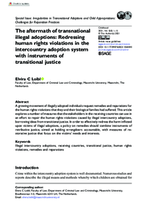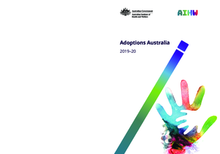Displaying 61 - 70 of 653
A growing movement of illegally adopted individuals request remedies and reparations for the human rights violations that they and their biological families had suffered. This article explores a number of measures that the stakeholders in the receiving countries can use in an effort to repair the human rights violations caused by illegal intercountry adoptions, borrowing ideas from transitional justice. In order to effectively redress the harm inflicted upon victims of illegal adoptions, a policy on remedies should combine instruments of retributive justice, aimed at holding wrongdoers accountable, with measures of restorative justice that focus on the victims’ needs and interests.
This webinar, the fourth in a series from the Transforming Children's Care Global Collaborative Platform, explored the importance of protecting the child’s right to identity in how it is created, how it may be modified and/or falsified in alternative care as well as the need to preserve information about the child’s identity, notably family relations.
This study sought to understand how intercountry adoptees with adoption discontinuity histories experience legal, relational, and residential permanency losses through the framework of ambiguous loss and trauma.
The current study assessed the efficacy of the Attachment and Biobehavioral Catch-up intervention for reducing behavior problems in 122 children adopted internationally.
In the present study, the authors explored the adult-child interactions that took place in 116 families from Spain: 28 long-term non-kin foster families, 34 adoptive families, and a community comparison group made up of 54 families.
This study explores issues on post-adoption services in intercountry adoptions based on the perspectives of adoption professionals from Taiwan and Australia.
This paper explores how adoptive parents, with knowledge of exploitation in their own adoptions, are responding emotionally and pragmatically.
Adoptions Australia 2019–20, the 30th report in the series, covers the latest data on adoptions of Australia children and children from overseas, and highlights important trends in the number of adoptions dating back to 1995–96.
The current study aimed to examine effects of pre-adoptive risk on long-term functioning in children adopted from foster care.
The current study aimed to examine effects of pre-adoptive risk on long-term functioning in children adopted from foster care.


